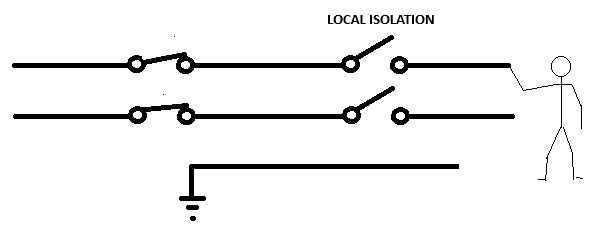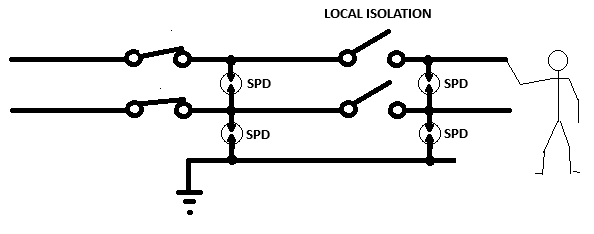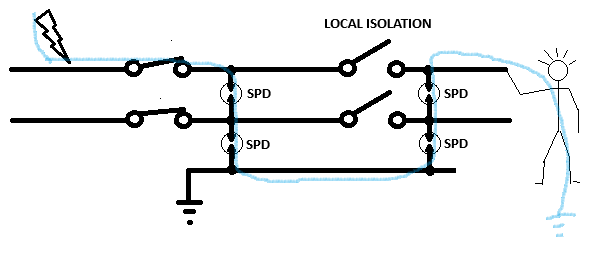I've been gradually retrofitting SPD to my own installation so have been pondering a few of the trickier cases and where the surge currents/voltages are likely to flow, which led me to an odd thought... If I have an SPD after a point of isolation (which is the usual arrangement in CUs etc) - is there a risk of the SPD transferring a nasty voltage back onto the (live) conductors that are meant to be isolated?
On the basis that SPDs work by creating a momentary (or short duration) short circuit - they'll raise the potential on PE as much as they reduce it on the live conductors (at least on a TN system) - that's fine of course as equipment will mostly only see the voltage difference between live conductors and PE. On TT I presume PE will be dragged up a lot more than L is dragged down ... but the p.d. between them is almost eliminated just the same.
My thought process went something like this...
1. Simple (say TT) installation, local isolation for a bit that's being worked on (perhaps outdoors?)

2. Add some SPDs..

normally still safe to work on..
3. During a surge..

maybe not quite so good.
Yes, some of the current will be diverted to terra firma by the installation's electrode, but likely not all of it.
The surge should be a very short duration (if from lightning or some such), but might be longer (e.g. if the overvoltage is due to a broken supply N or some other cause).
(And it does tie in with the old conundrum about isolating the N/PE if working outside the equipotential zone.)
Anyhow I thought I'd throw the idea out there to see what people thought. Mostly I suspect it's a non-issue, but maybe there's a few corner cases where the normal advise for safe isolation might be augmented with "..and pull out the SPD cartridges".
- Andy.